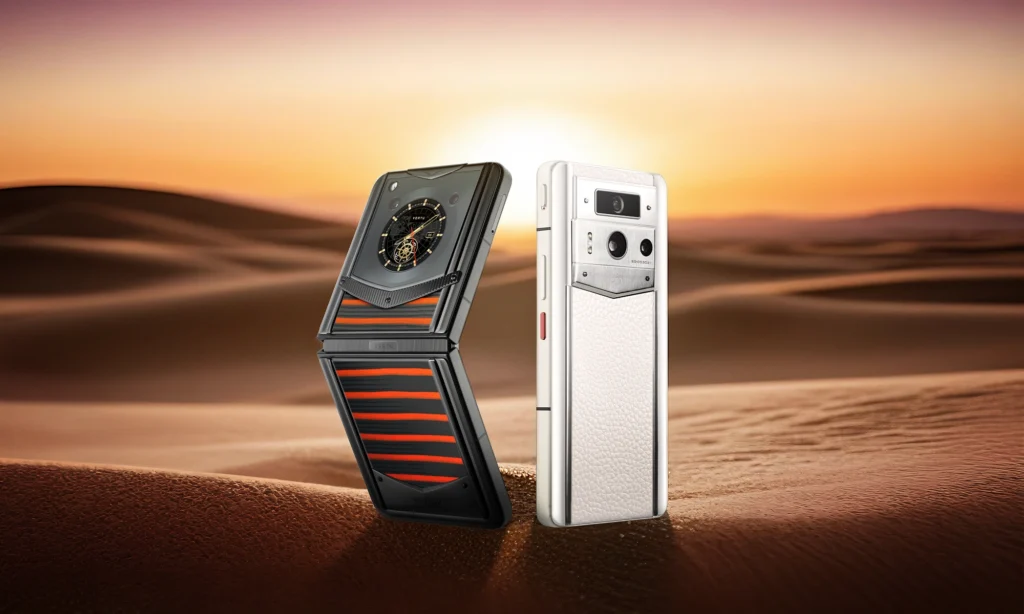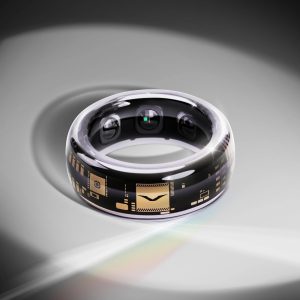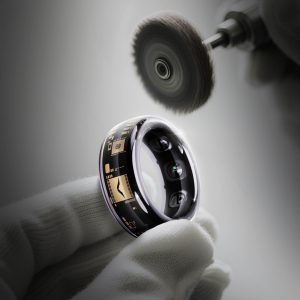
In today's visually driven world, your smartphone is your ever-present camera, ready to capture life's fleeting moments. But not all phone cameras are created equal. As we move through 2025, the gap between a standard smartphone and the best smartphone for photography has widened, driven by incredible advancements in hardware and software. Whether you're a seasoned photographer or a casual user aiming for better-looking photos, this guide will provide you with the deep insights and data-backed recommendations to choose your perfect photographic companion.
What Makes a Smartphone Camera Great in 2025?
Beyond the headline megapixel numbers, several key factors determine a smartphone's photographic prowess. Understanding these will empower you to see past the marketing hype and identify what truly matters for image quality.
It Starts with the Hardware: Sensor Size & Aperture
The most critical hardware components are the image sensor size and the lens's aperture. A larger sensor can capture more light, which directly translates to more detail, better dynamic range (the difference between the darkest and brightest parts of an image), and significantly less “noise” or graininess, especially in low-light conditions. Similarly, a wider aperture (indicated by a lower f-stop number, like f/1.7) allows more light to hit the sensor, which is crucial for night shots and for creating a natural, pleasing background blur (bokeh).
The Truth About Zoom: Optical vs. Digital
Understanding the difference between zoom types is essential. Optical zoom uses the physical movement of lenses to magnify a subject, just like a traditional camera. This method is “lossless,” meaning it preserves the full image quality. Digital zoom, on the other hand, is simply cropping and enlarging a portion of the image, which inevitably leads to a loss of detail and a softer, often pixelated result. Top-tier phones in 2025 offer powerful optical zoom, often using periscope-style lenses to achieve impressive magnification without making the phone bulky.
The Software Magic: Computational Photography
This is the secret sauce that has supercharged smartphone cameras. Computational photography uses powerful processors and advanced AI algorithms to enhance images in ways hardware alone cannot. When you take a picture, the phone might capture multiple frames at different exposures and instantly merge them. This is the technology behind key features like:
-
HDR (High Dynamic Range): Balances bright skies and dark shadows in a single, detailed shot.
-
Night Mode: Stacks multiple images to create bright, clear photos in near darkness.
-
Portrait Mode: Uses depth data to intelligently blur the background, making the subject pop.
-
AI Enhancements: Google's latest phones can use generative AI to fill in missing details in high-zoom shots, a feature they call Pro Res Zoom.
Don't Forget Video
The best camera phones are also video powerhouses.[11] Look for capabilities like 4K and even 8K recording, high frame rates (like 120fps for super slow-motion), and advanced stabilization (OIS – Optical Image Stabilization) to ensure your videos are smooth and professional-looking.
Top 5 Smartphones for Photography in 2025: Expert Picks
After extensive testing and analysis of the latest flagships, here are our top recommendations for the best smartphone for photography in 2025.
1. Google Pixel 10 Pro: The AI-Powered Point-and-Shoot King
-
Camera System: A pro triple-camera setup featuring a 50MP main wide lens, a 48MP ultrawide lens, and a 48MP telephoto lens with 5x optical zoom.
-
Unique Features: The Pixel's strength lies in its industry-leading computational photography. Features like Pro Res Zoom up to 100x use generative AI for surprisingly clear long-distance shots. The AI Camera Coach helps users frame better shots, and its night and astrophotography modes remain best-in-class.
-
Performance: The Pixel 10 Pro effortlessly captures stunning, true-to-life photos in almost any condition. Its ability to handle tricky lighting and produce sharp, detailed images with minimal effort is unmatched.
-
Pros: Unbeatable software processing, excellent point-and-shoot reliability, powerful and intuitive AI editing tools.
-
Cons: Video capabilities, while strong, still lag slightly behind the top iPhone.
-
Best For: Photographers who prioritize stunning still images, effortless shooting, and powerful AI-assisted editing.
2. Apple iPhone 17 Pro Max: The Videographer's and Creator's Choice
-
Camera System: A groundbreaking triple-lens system where all cameras (Main, Ultra Wide, Telephoto) are 48MP sensors for the first time.
-
Unique Features: The iPhone 17 Pro Max boasts an advanced telephoto lens with a new tetraprism design that allows for up to 8x optical-quality zoom. For professionals, it offers robust features like ProRes RAW and the new Apple Log 2 video recording for maximum flexibility in post-production.
-
Performance: Apple's phones are renowned for their consistency and natural color science. The iPhone 17 Pro Max excels in video, producing cinematic, stable footage that is the benchmark for the industry. Photos are detailed, and the integration with the Apple ecosystem is seamless.
-
Pros: Best-in-class video recording, consistent and reliable image quality, powerful pro-level formats (ProRAW, ProRes).
-
Cons: Can be less aggressive with HDR compared to rivals, requiring more editing for a “wow” factor.
-
Best For: Videographers, content creators, and anyone embedded in the Apple ecosystem who values consistency and professional-grade video.
3. Samsung Galaxy S25 Ultra: The Versatility and Zoom Champion
-
Camera System: A powerful quad-camera setup, expected to be headlined by a 200MP main sensor, a new 50MP ultrawide, and a dual telephoto system for incredible zoom flexibility.
-
Unique Features: Samsung continues to dominate the zoom game. The S25 Ultra is expected to offer exceptional zoom capabilities, reaching up to 100x “Space Zoom” with a combination of optical and AI-enhanced digital zoom. Its camera app is packed with features and pro modes for those who like to take manual control.
-
Performance: The S25 Ultra produces vibrant, punchy images that are immediately shareable. Its massive 200MP sensor allows for incredible detail and cropping flexibility. The updated 50MP ultrawide lens is a significant upgrade, promising better low-light performance and detail.
-
Pros: Unmatched zoom capabilities, high-resolution main sensor for incredible detail, feature-rich camera app.
-
Cons: Images can sometimes be overly saturated or sharpened for a more “processed” look.
-
Best For: Users who want the ultimate photographic versatility, from expansive landscapes to extreme zoom shots of distant subjects.
4. Xiaomi 15 Ultra: The Hardware Enthusiast's Dream
-
Camera System: A Leica-engineered quad-camera system featuring a massive 1-inch main sensor, a 200MP periscope zoom lens, and versatile ultrawide and telephoto lenses.
-
Unique Features: The standout feature is the 1-inch primary sensor, which is significantly larger than those in most competitors. This allows for exceptional light-gathering capabilities, producing images with beautiful, natural depth of field and outstanding low-light performance.
-
Performance: The Xiaomi 15 Ultra is a beast for still photography, often rivaling dedicated cameras in terms of raw image quality. The Leica co-branding brings unique color profiles and shooting modes that photography enthusiasts will appreciate.
-
Pros: Largest-in-class main sensor, excellent hardware across the board, unique Leica color science.
-
Cons: Software can be less refined than competitors, and availability in some regions (like the US) can be limited.
-
Best For: Serious photography enthusiasts who understand camera hardware and want DSLR-like image quality in their pocket.
5. OnePlus 13: The Value Flagship
-
Camera System: A Hasselblad co-developed triple-camera system, offering a capable main, ultrawide, and telephoto lens combination.
-
Unique Features: The partnership with Hasselblad lends a unique and natural color calibration to the photos, which many photographers prefer over the more saturated look of other brands. It offers a clean, user-friendly interface with powerful pro controls.
-
Performance: The OnePlus 13 delivers consistently great images that strike a balance between quality and value. While it may not beat the top contenders in every specific category, it performs admirably across the board, making it a reliable all-rounder.
-
Pros: Excellent value for the price, natural Hasselblad color science, strong all-around performance.
-
Cons: Zoom capabilities aren't as powerful as the top-tier competition.
-
Best For: Users who want a flagship-level camera experience without paying the absolute premium price.
Head-to-Head Comparison: 2025's Camera Phone Titans
| Feature | Google Pixel 10 Pro | Apple iPhone 17 Pro Max | Samsung Galaxy S25 Ultra | Xiaomi 15 Ultra |
| Main Camera | 50MP with superior AI processing | 48MP with exceptional consistency | 200MP for maximum detail | 50MP with a massive 1-inch sensor |
| Zoom System | 5x optical, 100x AI-powered Pro Res Zoom | 4x/8x optical quality, 40x digital | Dual telephoto, 100x Space Zoom | 200MP periscope zoom |
| Ultra Wide | 48MP | 48MP | 50MP (upgraded) | 50MP |
| Video Quality | Excellent 4K/60fps | Best-in-class 4K/120fps, ProRes RAW | 8K recording, versatile modes | 8K and 4K/120fps options |
| “Killer Feature” | Unbeatable AI-driven photography & editing | Professional-grade video & ecosystem | Ultimate zoom and versatility | DSLR-like 1-inch main sensor |
Frequently Asked Questions (FAQ)
1. Is a higher megapixel count always better?
Not necessarily. While a higher megapixel count (like Samsung's 200MP) can provide more detail for cropping, factors like sensor size, pixel quality, and software processing are often more important for overall image quality, especially in challenging lighting conditions.
2. Can a smartphone camera truly replace a DSLR or mirrorless camera?
For the vast majority of users, including many enthusiasts and content creators, the answer is yes. The convenience and advanced computational photography of today's top smartphones produce incredible results. However, professionals who need the ultimate image quality, the flexibility of interchangeable lenses, and uncompromising manual control will still prefer a dedicated camera system.
3. How important is software and AI compared to the camera hardware?
In 2025, it's a 50/50 split. Excellent hardware (like a large sensor) provides a high-quality foundation, but it's the software and AI that unlock a phone's true potential. Features like Night Mode, Portrait Mode, and AI-enhanced zoom are entirely dependent on advanced computational processing to work their magic.
Recommended Audience
-
Social Media Influencers & Content Creators: Apple iPhone 17 Pro Max (for video), Samsung Galaxy S25 Ultra (for versatile photos).
-
Serious Amateur Photographers: Google Pixel 10 Pro (for AI-powered ease-of-use), Xiaomi 15 Ultra (for hardware enthusiasts).
-
Parents & Everyday Users: Google Pixel 10 Pro (for reliable point-and-shoot photos), OnePlus 13 (for great value).
-
Travelers & Outdoor Adventurers: Samsung Galaxy S25 Ultra (for its incredible zoom range).







